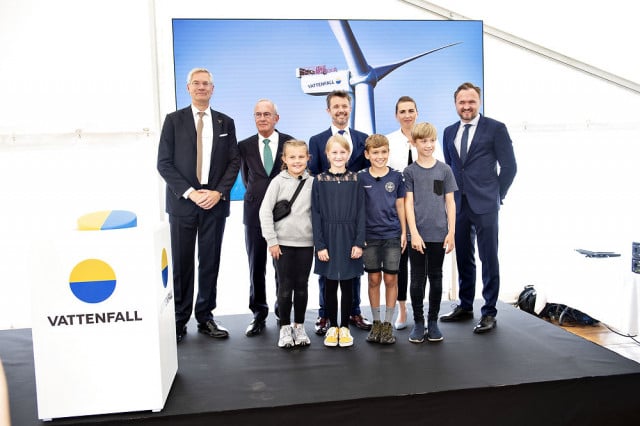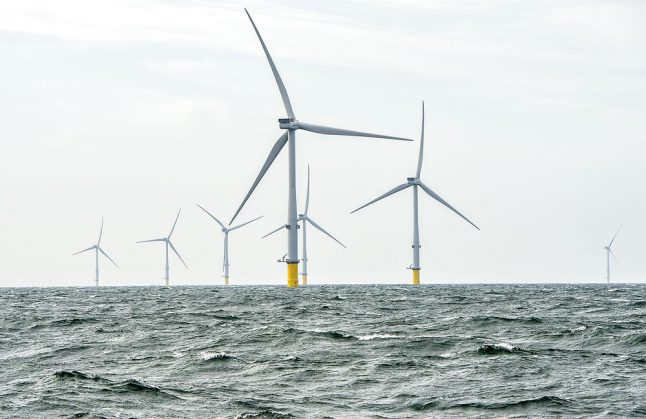The wind farm, Horns Rev 3, was inaugurated Thursday afternoon at the harbour in Hvide Sande, seven years after parliament voted in favour of the turbines, writes dibusiness.dk.
It is the largest of its kind in the country and will play a key role in Denmark’s goal to have half its electricity produced by wind power by 2020.

Crown Prince Frederik (centre) inaugurated the Horns Rev 3 wind farm, while PM Mette Frederiksen and local schoolchildren were also among those present on Thursday. Photo: Henning Bagger/Ritzau Scanpix
Director Tine Roed of the Confederation of Danish Industry (Dansk Industri, DI) called Horns Rev 3 an “outstanding achievement within wind power development”.
“The turbines are constantly getting bigger and more efficient. Companies are getting better at manufacturing and installing the turbines, and the price is falling,” Roed said.
The new plant also represents a step forward in wind turbine technology.
The turbines, produced by Danish company Vestas, are double the size of the turbines that used at the offshore wind farm off Anholt, in operation since 2013. Meanwhile, the price of the new turbines is 32 per cent lower, DI Business reports.
This means that wind turbines can now compete with essentially all other forms of new electricity production, which contributes to reducing carbon emissions.
The 187-metre tall wind turbines will provide year-round electricity for about 425,000 households.
“We are well on our way to eradicating the environmental impact of our electricity sector. In the future, we must become better at utilising green power elsewhere – for example when driving cars and heating houses,” Roed said.
“Danish wind turbines are a highly demanded export good, but the competition is tough. It is therefore essential that the sector has a domestic market that supports the development and testing of wind turbines,” the DI director added.
READ ALSO: Danish politician goes viral with video offering Trump 'great deal' on windmills



 Please whitelist us to continue reading.
Please whitelist us to continue reading.
Member comments